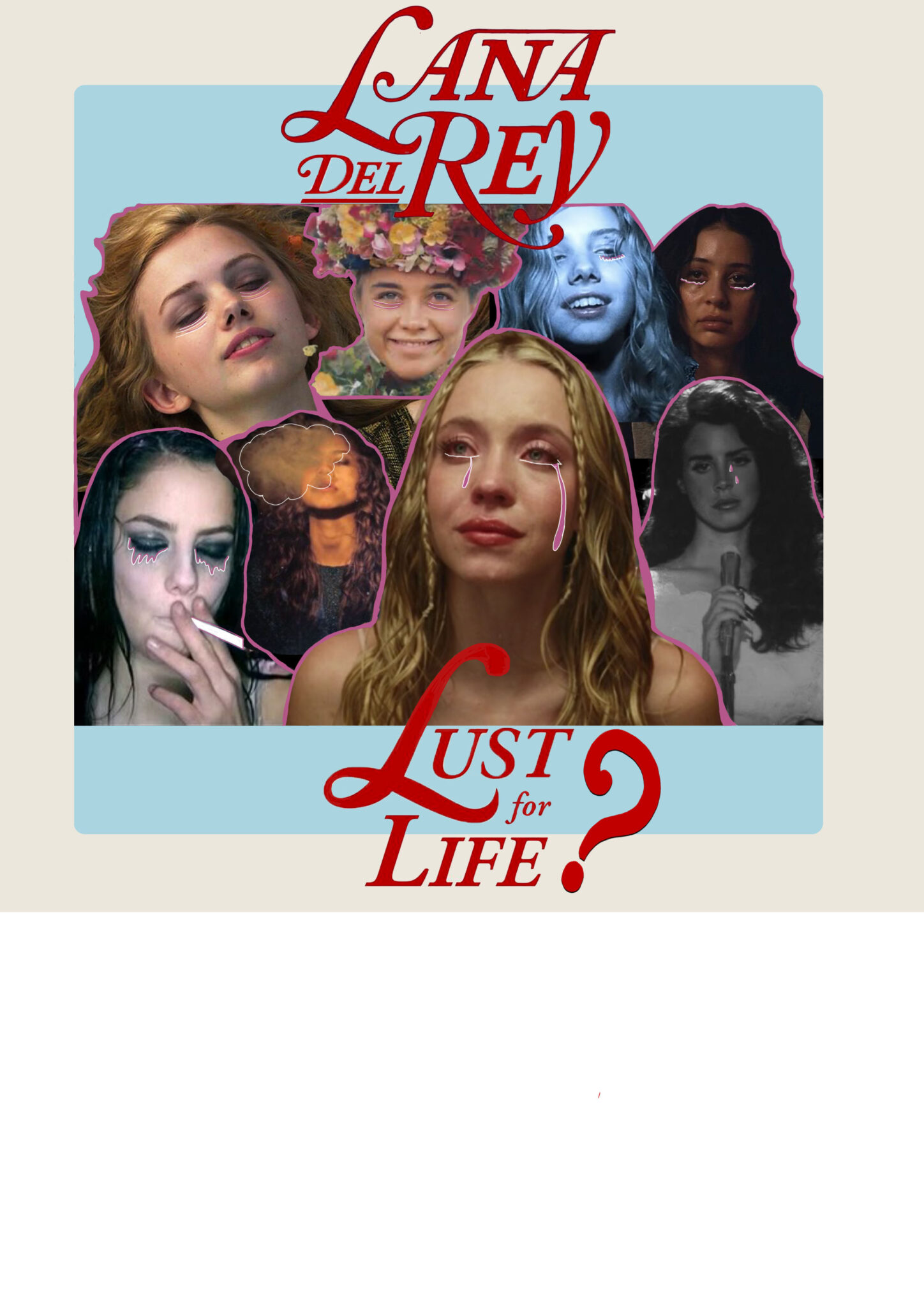Dating all the way back to classical literature, the “sad girl” aesthetic is not a new interest to men and women alike. Over the past few decades, the modern media has brought the “damsel in distress” or “tortured artist” tropes back to life. Obsessions with tragic romance and the tortured feminine ideal has shrouded social media platforms, the music industry and the film world for everyone to enjoy miserably. Showing the dark side of womanhood was originally recognised when female authors began to be taken more seriously, and it was used to portray how it felt to be a woman under a patriarchal world. When men take this into their own hands to profit and capitalise off the complexities of women’s pain, is the line between empowerment and exploitation crossed?
It’s important to acknowledge what the “sad girl” aesthetic entails; the romanticisation of pain, heartache, disorders, addiction and self-sabotage. These characteristics are often explicitly on account of men, differing between romantic pain or systematic pain due to living in a “man’s world”. To illustrate, a typical “sad girl” may look like a girl smoking cigarettes with tears running down her face, whilst listening to Lana Del Rey or Mitski. Delving into the music industry, the label of being “sad girl” female musician who sings about sensitive and dark topics, such as domestic and sexual abuse, continues the idolisation of this detrimental ideology. Instead of these women having a platform to seriously detail the intricacies of the detriments of “womanhood”, their music has been consistently sold as a sultry depiction of women who are in love. It is often profited off as the experience of women across the world is relatable to this thematics, which is an issue with society itself. These artists have been known to attempt to create more upbeat music and attempted to veer away from the aesthetic, however this hasn’t pulled them away from their original label. The idolisation of these emotions drive the idea that the look of suffering is attractive and is profitable because of this.
Furthermore, the film industry is no better than music, if not even worse for the portrayal of the “sad girl” aesthetic. The difference between the music and film industry regarding profiting from female pain is that the film industry actively presents an explicit view on abuse of women. To begin, a popular example of the character of the “sad girl” was Cassie Howard from Euphoria. Played by Sydney Sweeney, this character was blatantly portrayed as a sexualised and glorified sad girl who had a lack of self-respect and would self-sabotage many aspects of her life. The story surrounding her character is that after her father being absent and having been disrespected and sexualised by men consistently, she falls into a pattern of self-destruction. This self-destruction leads to an unhealthy obsession with trying to be loved by her friend’s ex-boyfriend. Through looking at the way she is portrayed as a villain even though the long run-up to her behaviour was due to the objectification by the men in her life, the patriarchal exploitation was very clear. A common issue that is seen in character tropes like Cassie’s is that the media vilifies women for their “irrational” responses to the disrespect that is thrown at them. There were many men in the show that were seen to commit crimes, domestically abuse women and more, but these men weren’t portrayed as villains as much as Cassie was. The “sad girl” aesthetic tends to be an end result of a long term of abuse. With Sweeney’s character going through an immense amount of abuse, as well as other female characters in Euphoria, it is important to acknowledge that when this direct depiction of abused women continuing to be attractive or “pretty when they cry”, pushes a narrative where abuse becomes normalised and acceptable. With young people growing up watching these “love” stories of abuse through media, it becomes an issue where there is huge potential of this becoming a cycle of normalised, abusive behaviour or tendencies.
Regarding a more common source of this aesthetic, the modern ideas surrounding the “sad girl” aesthetic have sparked popularity on social media platforms such as TikTok and Instagram. Many trends of this ideology consist of the idea of “rotting in bed”, “cute but depressed” or getting “Tove Lo drunk”. While these are fun to partake in, these trends tend to undermine the actual issues of poor mental health and trauma. The reality is that things like depression and anxiety can be very harmful and ruinous in someone’s life. Media has covered the realities up with the portrayal of depression and addiction as something that is somewhat “sad but glamorous”. Normalisation of beauty in sadness is something that becomes a harmful cover-up of the real issues of suffering with mental health disorders. It breeds the ideology that being attractive throughout the tough times is the ‘norm’, whereas mental health disorders are far from glamorous.





